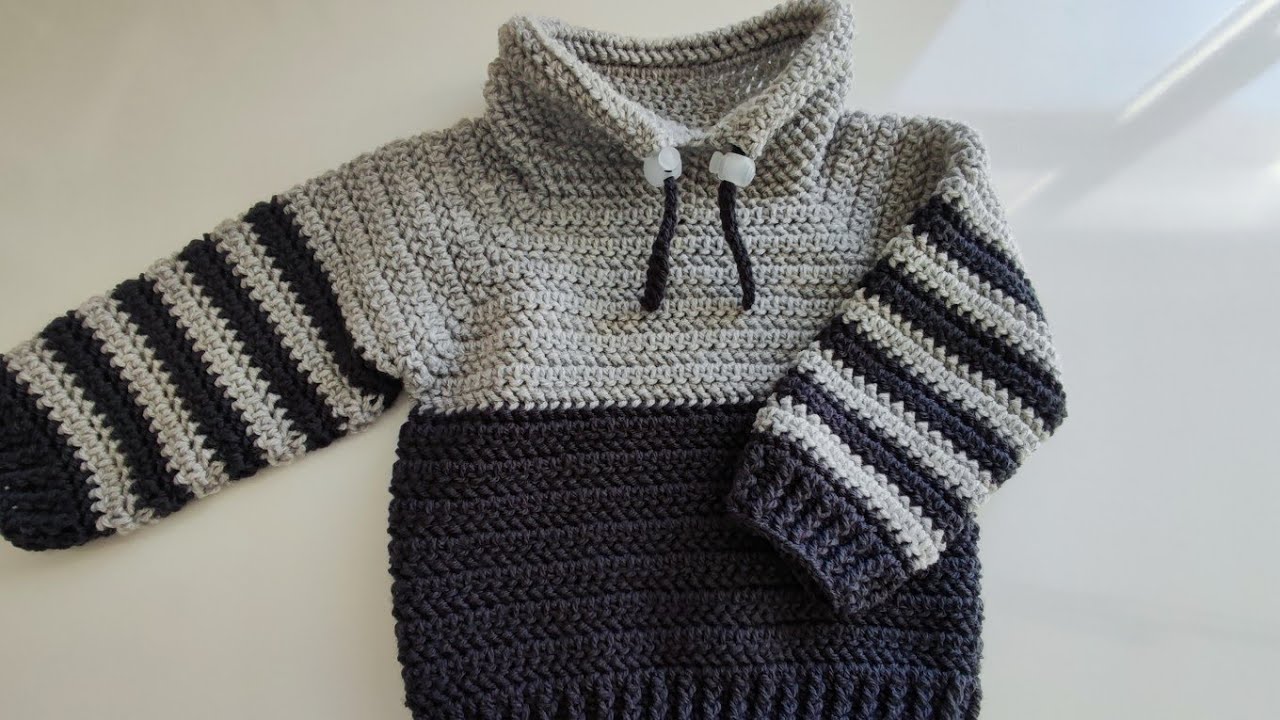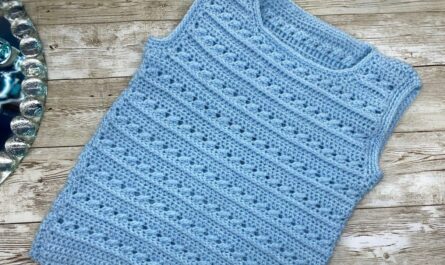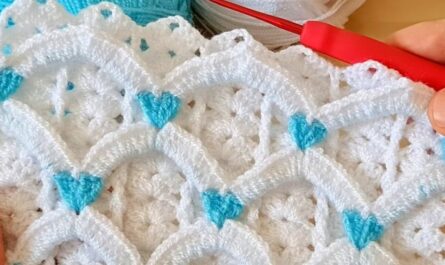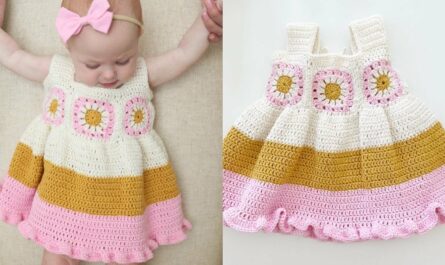A handmade pullover for a boy is more than just a garment; it’s a cozy hug, a durable companion for adventures, and a tangible expression of love. Crocheting a sweater for a young boy allows you to customize the fit, choose resilient and comfortable yarns, and create a timeless piece that can withstand the rigors of active play.
This detailed guide will walk you through the essential steps and considerations for crocheting a practical, comfortable, and handsome pullover that any boy would be happy to wear.
Why Crochet a Pullover for a Boy?
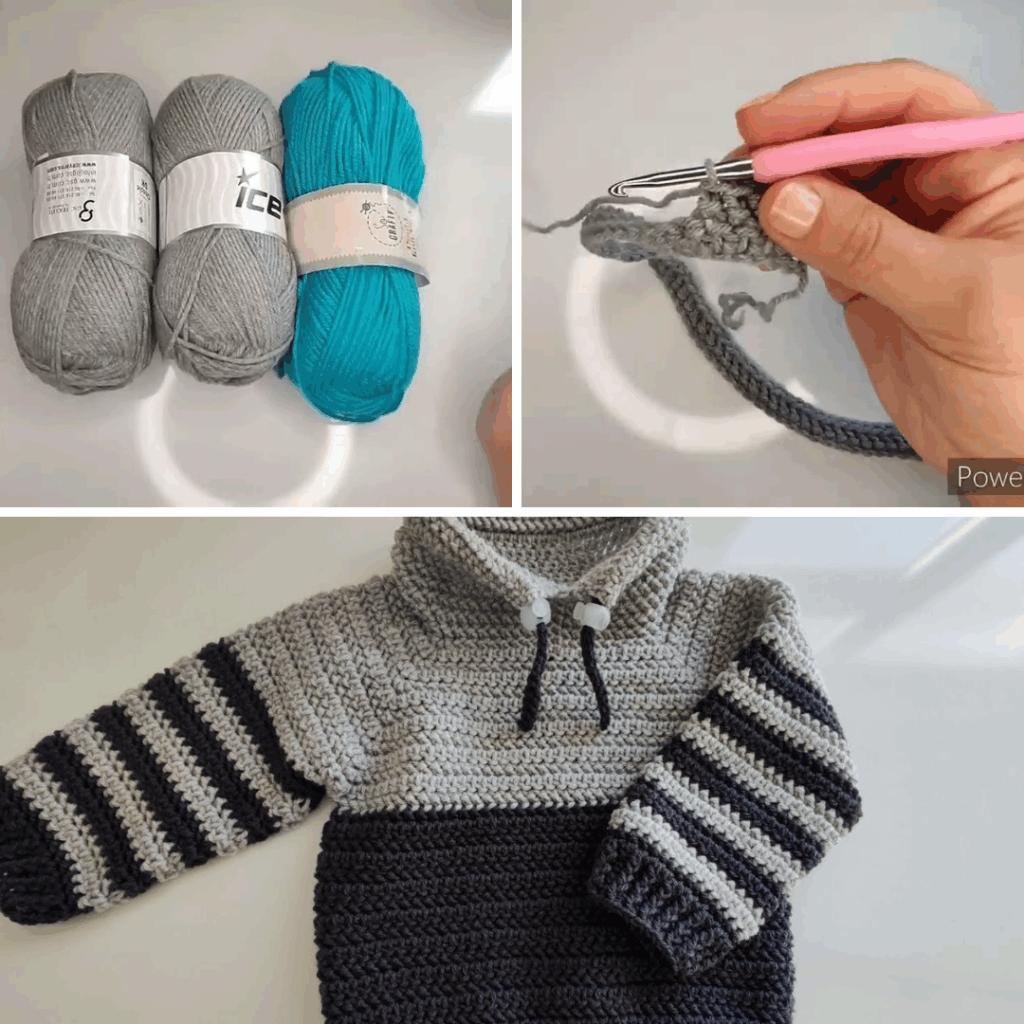
- Tailored Comfort and Fit: Commercial sweaters don’t always fit perfectly. Crocheting allows you to customize measurements, ensuring a comfortable fit that allows for easy movement and layering.
- Durability and Resilience: Boys are active! By choosing sturdy yarns and dense stitch patterns, you can create a pullover that truly stands up to daily wear, tear, and frequent washing.
- Personalized Style: You have full creative control over color choices, stitch patterns, and subtle textures. Whether he loves bright colors, earthy tones, or classic stripes, you can make it uniquely his.
- Skill Advancement: Crocheting a full garment is an excellent project for honing your skills, practicing shaping techniques, and mastering seamless or seamed construction.
- Thoughtful and Cherished Gift: A handmade pullover is a deeply personal gift, imbued with effort and affection, making it an instant favorite and potentially a cherished heirloom.
- Cost-Effective (Sometimes): While yarn can be an investment, often a handmade sweater can be more economical than a high-quality store-bought equivalent, especially if you catch yarn sales.
Key Elements of a Boy’s Pullover:
Understanding these basic components will help you visualize and plan your project:
- Body: The main section of the sweater, covering the torso. It can be worked in one piece (seamless) or in front and back panels (seamed).
- Sleeves: Typically worked in the round from the armhole down or flat and seamed. They need to be long enough for warmth but allow for unrestricted arm movement.
- Neckline: The opening for the head. This is often finished with a ribbed band to provide elasticity and a neat, comfortable edge.
- Hem and Cuffs: Ribbed edges at the bottom of the body and sleeves provide a snug fit, prevent stretching, and give a polished finish.
- Comfortable Fabric: Achieved through careful yarn selection and appropriate stitch density, ensuring the fabric is soft against skin and drapes well.
Choosing Your Tools & Materials:
Careful selection of materials is crucial for creating a warm, durable, and comfortable pullover.
- Yarn: The Foundation of Durability and Warmth!
- Fiber:
- Superwash Merino Wool: An excellent choice for its incredible softness, superior warmth, breathability, and, most importantly for kids’ clothing, its machine washability (always check the label!). It drapes beautifully and is gentle on sensitive skin.
- Durable Acrylics or Acrylic Blends: Many modern acrylic yarns are wonderfully soft, hard-wearing, colorfast, and very easy to care for (often machine wash and dry). Look for “anti-pilling” varieties for longevity.
- Wool Blends (e.g., Wool/Nylon, Wool/Acrylic): These combine the natural warmth and breathability of wool with the added strength and easier care of synthetic fibers.
- Avoid: Yarns that are scratchy, stiff, or prone to excessive shedding, as these won’t be comfortable for a child.
- Weight:
- Worsted (Aran / Category 4): This is often the ideal weight for a boy’s pullover. It provides good warmth, works up at a reasonable pace, and creates a sturdy fabric.
- DK (Double Knitting / Category 3): Can be used for a slightly lighter version, perhaps for spring or early autumn, but you might need to use a denser stitch pattern to achieve adequate warmth.
- Bulky (Chunky / Category 5): For a very quick-to-make and super chunky, warm pullover.
- Color Palette: Consider his favorite colors! Earthy tones (forest green, rust, mustard, deep blue, charcoal, brown, beige), classic solids, or subtle heathered yarns are popular choices. Stripes are also a fantastic way to add personality.
- Quantity: Pullovers are yarn-hungry! Expect to need 800-1200 yards for toddler sizes (2T-4T) and 1200-2000+ yards for older boy sizes (6Y-12Y), depending on yarn weight and chosen length. Always consult your chosen pattern’s specific recommendations.
- Fiber:
- Crochet Hook:
- Consult your chosen yarn label for a suggested hook size (e.g., 5.0mm, 5.5mm, 6.0mm).
- Crucial for Garments: Your actual hook size will be determined by achieving the correct gauge for your pattern. You will almost certainly need to adjust your hook size (up or down by half a size) to ensure the proper fit, comfortable drape, and desired fabric density.
- Other Notions:
- Stitch Markers: Essential for marking raglan lines, the beginning of rounds, or specific shaping points.
- Tapestry Needle: For neatly weaving in all yarn ends and seaming panels (if your pattern is not seamless).
- Scissors.
- Measuring Tape: For frequent measurements during construction.
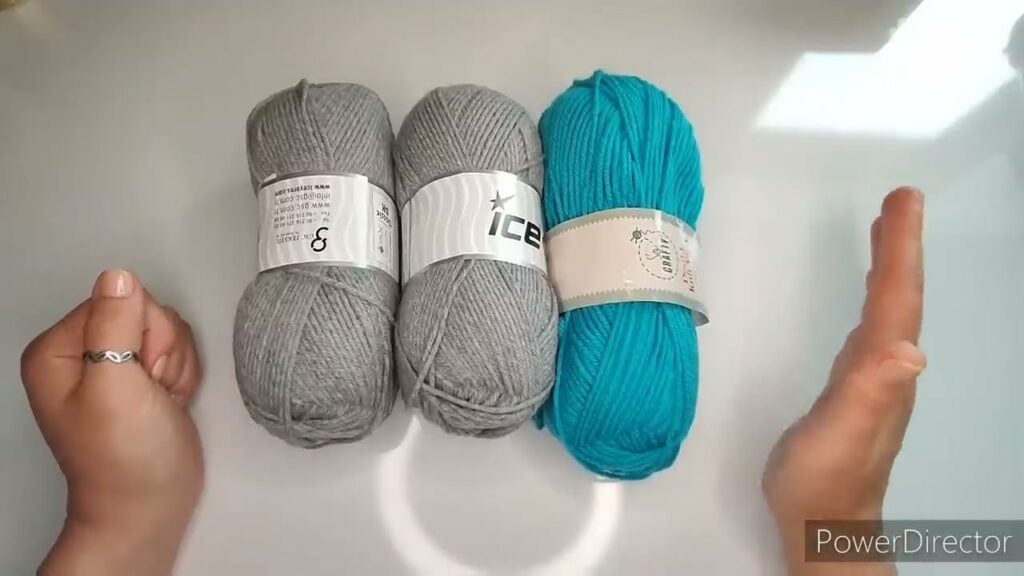
Understanding Sizing & Gauge (ABSOLUTELY CRITICAL for Garments!)
Accurate sizing is paramount for a comfortable, well-fitting, and functional pullover that allows for ease of movement.
General Boys’ Pullover Sizing (Approximate Measurements):
| Size | Approx. Chest Circ. | Approx. Finished Body Length (Shoulder to Hem) | Approx. Sleeve Length (Underarm to Cuff) | Approx. Neck Circ. (Finished) |
|---|---|---|---|---|
| 2T | 21-22 inches | 14-15 inches | 9-10 inches | 10-11 inches |
| 4T | 23-24 inches | 16-17 inches | 11-12 inches | 11-12 inches |
| 6Y | 25-26 inches | 18-19 inches | 13-14 inches | 12-13 inches |
| 8Y | 27-28 inches | 20-21 inches | 15-16 inches | 13-14 inches |
| 10Y | 29-30 inches | 22-23 inches | 17-18 inches | 14-15 inches |
Export to Sheets
Disclaimer: These are general averages. Always refer to the specific pattern’s measurements and sizing chart. Allow for 2-4 inches of “positive ease” (extra room beyond body measurements) for comfort and layering.
How to Make a Gauge Swatch (Do NOT Skip This Step!):
- Chain: Chain about 25-30 stitches, plus any turning chains (e.g., ch 3 for dc) as per your chosen main stitch pattern.
- Work: Crochet a square of at least 6×6 inches (15×15 cm) in the main stitch pattern you’ll be using for the pullover. A larger swatch provides a more accurate measurement.
- Wash & Block: Fasten off your swatch. Crucially, wash and block your swatch exactly as you plan to treat the finished pullover. This step relaxes the fibers and reveals the true stitch size and drape after washing, which can change significantly.
- Measure: Once dry, lay the swatch flat. Place a ruler over the center. Count how many stitches fit within 4 inches (10 cm) and how many rows fit within 4 inches (10 cm).
- Adjust:
- If you have more stitches per inch than your pattern (or desired gauge) states (your work is too tight), go up half a hook size and re-swatch.
- If you have fewer stitches per inch than your pattern states (your work is too loose), go down half a hook size and re-swatch.
- Repeat until your gauge precisely matches.
General Stitch Patterns for a Boy’s Pullover:
- Main Body (for warmth, durability, and texture):
- Half Double Crochet (hdc): Creates a balanced, dense, and warm fabric with good stitch definition. Excellent for a sturdy pullover.
- Double Crochet (dc): Works up quicker, creating a slightly looser fabric with more drape. Good for a relaxed fit.
- Moss Stitch (Linen Stitch): (
sc, ch 1, sk 1) Produces a beautifully dense, textured, and even fabric with good drape. - Simple Textured Stitches: Variations like the sedge stitch, grit stitch, or post stitch combinations can add visual interest and insulation without being overly complicated.
- Ribbing (for cuffs, hem, and neckline):
- Front Post/Back Post Double Crochet (fpdc/bpdc): Creates a strong, elastic, and professional-looking ribbed edge that springs back well. Ideal for cuffs, hem, and a neat neckline.
- Single Crochet in Back Loop Only (sc blo): A simpler, flexible ribbing option that works well for stretchy edges.
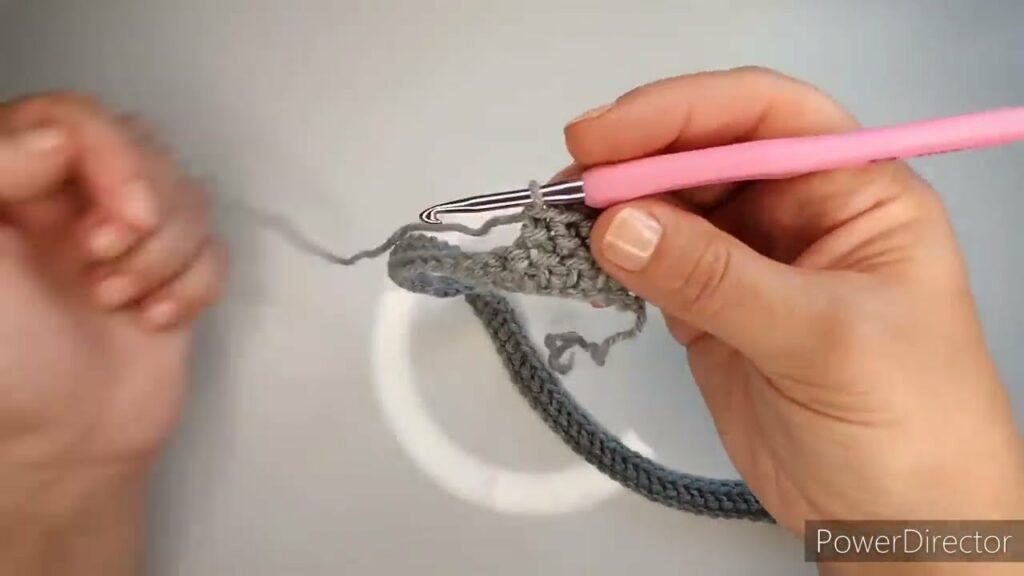
Step-by-Step Construction: The Boys’ Pullover (Top-Down Raglan Yoke)
The top-down raglan construction method is highly recommended for pullovers due to its seamless nature, which is comfortable for children, and its ease of trying on for fit as you go.
Phase 1: The Yoke (Top-Down, Raglan Shaping)
This forms the neckline, shoulders, and upper chest, worked from the top down.
- Step 1.1: Starting Chain & Neckline Rounds
- Foundation Chain: Chain the number of stitches specified by your pattern for the desired neckline circumference.
- Neckline Rounds: Work 3-5 rounds in a comfortable ribbing stitch (e.g., fpdc/bpdc or sc blo) to create a neat and elastic neckband. Join with a slip stitch to form a round at the end of the neckband.
- Step 1.2: Setting Up Raglan Yoke Divisions (First Increase Round)
- This round divides your total stitches into: Back Panel, Sleeve 1, Front Panel, Sleeve 2. You will have 4 raglan corners where all shaping increases occur.
- Work your chosen yoke stitch (e.g., dc or hdc) for the Back Panel. At the first raglan corner, work your specified increase (e.g.,
(2 dc, ch 2, 2 dc)or(dc, ch 1, dc)). Place a stitch marker (SM) in the chain space. Continue this pattern for Sleeve 1, Front Panel, Sleeve 2, with increases at each raglan corner.
- Step 1.3: Continuing Yoke Increases
- Subsequent Yoke Rounds: Continue working in rounds, working your specified increase into each of the 4 raglan spaces from the previous round. Move your stitch markers up to the new increase spaces.
- Continue working these increase rounds until the yoke measures the correct depth from the top of the neckline to the underarm for your chosen size. This is a crucial measurement for a comfortable fit.
Phase 2: Separating for Body & Sleeves
Once the yoke is the correct depth, you’ll divide the stitches to create the armholes and begin the main body of the pullover.
- Separation Round:
- Work stitches for the Back Panel.
- Work into Raglan Corner 1.
- Skip Sleeve 1: Place all stitches of Sleeve 1 (the stitches between Raglan Corner 1 and Raglan Corner 2) onto a piece of scrap yarn or a stitch holder.
- Underarm Chain: Chain 2-4 stitches (this creates extra room at the underarm and fills the gap, preventing tightness).
- Work into Raglan Corner 2.
- Work stitches for the Front Panel.
- Work into Raglan Corner 3.
- Skip Sleeve 2: Place all stitches of Sleeve 2 onto a holder.
- Underarm Chain: Chain 2-4 stitches.
- Work into Raglan Corner 4.
- Join with a slip stitch to the first stitch of the round to form a continuous circle for the body of the pullover.
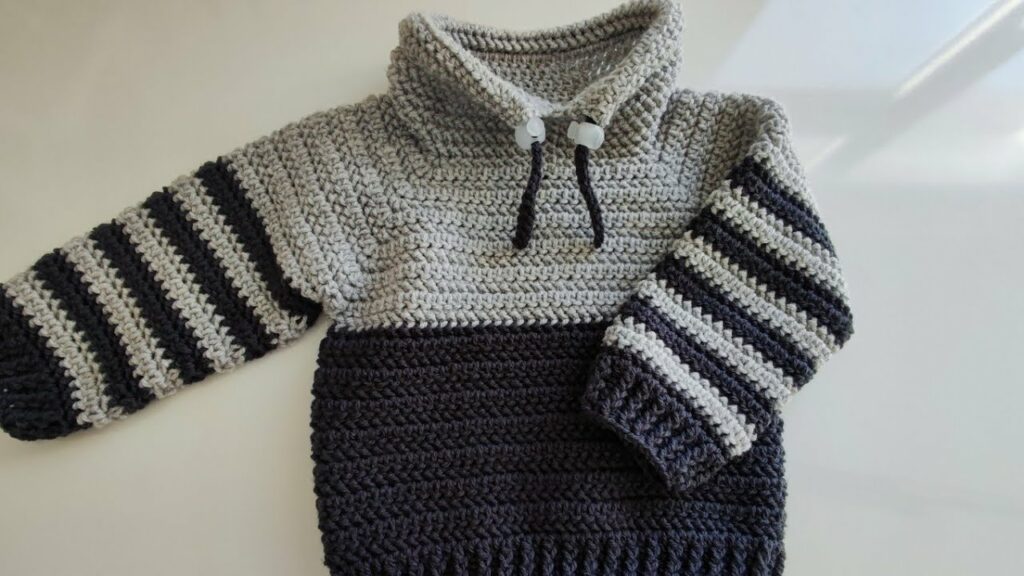
Phase 3: The Body of the Pullover
This forms the main torso section of the garment below the armholes.
- Body Rounds: Continue working in rounds using your chosen main stitch pattern.
- Shaping (Optional): You can maintain a straight circumference, or if desired, add very subtle decreases around the waist area for a more tailored fit, or slight increases for a relaxed, boxy shape.
- Length: Continue working rounds until the body reaches the desired length for the pullover (typically to the hip).
- Hem: Finish the bottom edge of the pullover with a substantial ribbed hem (e.g., 2-3 inches of fpdc/bpdc or sc blo ribbing).
Phase 4: The Sleeves (Make 2)
Each sleeve is worked individually, typically in the round, starting from the armhole.
- Attach Yarn: Attach your yarn to the center underside of one armhole opening (where your underarm chain was).
- Pick Up Stitches: Work a round, picking up stitches evenly around the armhole opening (including into the underarm chain stitches). Join with a slip stitch to the first stitch to form a round.
- Working the Sleeve: Continue working in continuous rounds using your chosen main stitch pattern.
- Shaping: Gradually decrease stitches evenly spaced over several rounds to taper the sleeve towards the wrist. Your pattern will specify the decrease rate.
- Length: Work until the sleeve reaches the desired full length from the underarm to the wrist.
- Cuff: Finish the sleeve with a robust ribbed cuff (e.g., fpdc/bpdc or sc blo ribbing) that provides a snug, neat finish.
- Fasten off. Repeat all steps for the second sleeve, ensuring it is symmetrical to the first.
Video Tutorial Part 1 ;
Phase 5: Finishing Touches
These final steps bring your garment to a professional and durable completion.
- Weave in All Ends: Using your tapestry needle, meticulously weave in every single yarn tail. Secure them firmly by weaving them into existing stitches in different directions to prevent unraveling. This is crucial for a neat, durable, and comfortable finish.
- Blocking (ABSOLUTELY CRUCIAL for Garments!):
- Gentle Wash: Fill a basin with cool water and a small amount of mild, wool-friendly detergent. Gently submerge the pullover and let it soak for 20-30 minutes. Do not agitate or wring.
- Remove Excess Water: Gently squeeze out excess water. Roll the pullover in a clean, dry towel and press firmly to absorb as much moisture as possible.
- Shape & Dry: Lay the pullover flat on blocking mats. Gently stretch and shape it to the correct finished dimensions (chest width, body length, sleeve length, and neckline). Smooth out any unevenness and define the ribbed edges. Use rust-proof T-pins if needed to hold the shape firmly.
- Air Dry Completely: Allow the pullover to air dry completely. Blocking is a transformative step that relaxes the fibers, evens out your stitches, enhances the drape, and gives your pullover a beautifully polished, professional appearance.
Tips for Pullover Success:
- Yarn Choice is Paramount: Always prioritize soft, durable, and easily washable yarns suitable for active children. Anti-pilling acrylics or superwash wools are excellent choices.
- Gauge Precision: This is the most critical factor for a well-fitting garment. Don’t skip the swatch!
- Comfortable Fit: A slightly relaxed fit (2-4 inches of positive ease) is often ideal for boys, allowing freedom of movement for play.
- Seamless Construction: If using the top-down raglan method, the seamless nature reduces bulk and potential irritation points, making the pullover more comfortable.
- Neat Neckline & Ribbing: Well-defined and elastic ribbing at the neck, cuffs, and hem elevates the finished look of the pullover and ensures a comfortable fit.
- Measure Frequently: Compare your work to a favorite commercial pullover or the boy’s actual measurements to ensure the dimensions are correct as you go.
Care Instructions for Your Handmade Pullover:
- Always follow your chosen yarn label’s specific care instructions. This is especially important for natural fibers.
- Reshape and Lay Flat to Dry: Gently reshape the pullover while wet and lay it flat on a clean towel or drying rack to air dry completely. Pay extra attention to reshaping the cuffs, hem, and neckline to ensure they retain their intended form. Do not hang, as this can stretch the fabric and distort the garment’s shape.
Video Tutorial Part 2 ;
Creating a crocheted pullover for a special boy is a truly rewarding endeavor. With each stitch, you’re crafting a cozy, durable piece that will keep him warm and comfortable through countless adventures and cool days. Happy hooking!
